- Home
- Robert A. Heinlein
Grumbles From the Grave Page 2
Grumbles From the Grave Read online
Page 2
The letters also make for a most excellent “director’s commentary” while reading the stories and novels, and will provide insights and provoke second and third readings to find the good stuff that you may have missed the first go round.
So what follows in this collection is a passage through the Golden Age of science fiction that is, not coincidentally, the First Golden Age of Robert A. Heinlein. If it wasn’t for the juveniles and adult novels where Heinlein first laid down the themes and methods that defined a Heinlein tale, the mighty philosophical fiction triumvirate of Starship Troopers, Stranger in a Strange Land and The Moon is a Harsh Mistress might well have become lost in the ether. Furthermore, an American literary masterwork, Have Space Suit−Will Travel, would never have existed at all.
For Heinlein's Children
FOREWORD
This book does not contain the polished prose one normally associates with the Heinlein stories and articles of later years. It has been taken from the day-to-day correspondence between the author and his agent, and from letters from several others, many of which have been excerpted.
Such cutting eliminates a great deal of tedious back-and-forth correspondence concerning details of contracts, discussions about royalty rates, and other items which would hold up the flow of information about the writing business (and other things). This book has been abstracted from enormous files, which run millions of words long, much of it boring to those not concerned with the daily business of writing and selling.
Many people have asked me to consider writing Robert's biography, or a joint one—his and mine—but I am not ready to do that yet. Perhaps, one day.
Meanwhile, this correspondence covers mostly the years from the time when Robert first began writing until the period 1969-1970, at which time he found that his writing time was effectively cut down to zero by the continuing details of his business and subsequently, grave illness . . . Over the years, I had taken over record keeping, information on sales, taxes, and some of the correspondence. In 1970, Robert was very sick for the entire year, and it was then essential that I keep the business running. It was fortunate that I had begun doing so the previous year.
In order to follow the various subjects, I have excerpted these letters to put together as many as possible of the remarks and ideas on those subjects. Each letter did have a number of topics in it, these have been separated where possible. Some of the topics are: juveniles, adult novels, publishers, travel, fan mail, time wasters, Robert's writing methods, and so forth.
Some names have been left out for legal reasons.
There are places where there are only notes on telephone conversations. It would be impossible to reconstruct those. They have been omitted.
There are a few sparse excerpts from letters which were written after I took over running the business end of Robert's writing . . . most of those letters written by Robert. He talked to Lurton Blassingame, his agent, now and then, but mostly he spent his time reading for his work, or writing. During the last eighteen years of his life, he had many illnesses. But, in between, he continued working.
I was his "first reader"—the person who read each work first and made suggestions for cutting, revisions, and so on. It was a great responsibility. When Robert came down with peritonitis in 1970, I Will Fear No Evil needed more cutting, but it was obvious that he was (and would be for a long time) in no condition to do that. And his publisher was calling for the manuscript, so I had it Xeroxed and sent it in. I take full responsibility for that. With further cutting, it might perhaps have been a better story. In spite of this, it has sold more than a million copies in U.S. paperback alone, and has been translated into more than half-a-dozen languages, and is still in print in all of those, including English.
At one time, Robert wrote to his agent about the possibility of writing a memoir-autobiography: Grumbles From The Grave by Robert A. Heinlein (deceased).
This is that book. It covers many years, many subjects, and some personal comments—taken mostly from letters between Robert and his agent, Lurton Blassingame.
Virginia Heinlein
Carmel, California 1988
A SHORT BIOGRAPHY OF ROBERT A. HEINLEIN BY VIRGINIA HEINLEIN
Robert Anson Heinlein was born July 7, 1907, the third of seven children of Bam Lyle Heinlein and Rex Ivar Heinlein, in Butler, Missouri. The growing family moved to Kansas City during his childhood.
(xvii)
Heinlein's birthplace in Butler, Missouri.
(xvii)
Robert A. Heinlein (lower right) with his sister Louise (lower left) and his brothers Lawrence Lyle (upper left) and Rex Ivar (upper right).
When Robert learned to read, he read everything he could lay his hands on. He did, in fact, read on his way to school, going along the street, up and down curbs, up to the schoolhouse. He attended junior high school, Central High School in Kansas City, and spent one year at a local junior college. His next older brother had gone before him to the United States Naval Academy, and Robert set his sights on going there. He collected many letters of recommendation from people and gained the appointment from Senator James Reed to enter the Naval Academy in 1925.
(xiii)
Heinlein at the time of his high school graduation.
(xiii)
Robert A. Heinlein, 1929.
Following his graduation and commissioning in 1929, he served aboard the Lexington under Captain E. J. King, who later became Commander in chief of the U. S. Navy during World War II. When his tour of duty on the Lexington was about to end, Captain King asked that he be retained as a gunnery specialist. However, Robert was given duty as gunnery officer on the Roper, a destroyer. Destroyer duty was difficult because of the rolling of the ship, and seasickness was a way of life for him. He lost weight and came down with tuberculosis. After he was cured, the Navy retired him from active duty.
At twenty-seven years of age, he found himself permanently ashore, with a small pension. It was necessary for him to find some way to augment that money. He tried silver mining, politics, selling real estate, and further study in engineering. One day, he found an ad in a science fiction magazine for a contest. So he sat down and wrote a story ("Life-Line"). He felt it was too good for the magazine he had written it for, so he sent it to the top magazine in the field—Astounding Science Fiction. John W. Campbell, Jr. bought the story.
(xiv)
Heinlein gets the ball rolling, 1934.
The next several stories he wrote were less salable, and it was only on his fifth or sixth try that Campbell again purchased one. The second and following stories eventually sold, but Robert was hooked for life on writing. Originally, his purpose in writing was to pay off a mortgage on a house which he and his wife of a few years had purchased. After that mortgage was paid off, he found that when he tried to give up writing, he felt vaguely uncomfortable, and it was only when he returned to his typewriter that he felt fulfilled.
* * *
During World War II, Robert left his writing to do engineering work for the U.S. Navy. For three years he did such work in Philadelphia. The war over, he returned to his writing. By this time, he was looking for wider horizons. He was persuaded to begin the juvenile line, and he sold stories to the Saturday Evening Post. His second juvenile was picked up by television, in a series that ran for five years. He also wrote the classic film, Destination Moon, and he began to think about writing serious adult novels to open up that market to science fiction.
Robert thought that the possibilities of mankind going into space were sufficiently important and feasible that before he left Philadelphia, he wrote two letters urging that the Navy begin space exploration. One letter went through channels as far as the head of the Philadelphia Naval Air Experimental Station, who killed the proposal. The second went (also through channels), via a friend, through Naval Operations, and got as far as a Cabinet meeting. It was reported that then-President Truman took it seriously enough to ask whether such a rocket could be launched from the deck of a ship.
No, the President was told. And that killed the project.
In 1947 Robert was divorced from his wife, and when he received his decree nisi, he married me. During World War II, I had gone into the Navy, as a WAVE, and my second tour of duty was in Philadelphia, where I met Robert; we worked in the same section.
One day Robert spent hours searching for some tear sheets for an anthology. In an effort to help, I decided that his files needed to be organized. So I set about that, setting up a system which I still use today. This began my involvement in the literary business.
By the time Robert found himself too busy to do more than overhead work (keeping up correspondence with his agents, keeping records, answering fan mail, and all the other chores attendant on being a literary figure), I was well enough acquainted with his business that I could take over those chores for him. We worked together as a team, discussing what to do about offers, and I would answer the letters for him.
* * *
With the juvenile series well launched, and selling many copies primarily to libraries, Robert became the darling of librarians. He was asked to give endless speeches, and when his annual books for boys came out, he did a special program for general radio distribution on each new book.
But he still yearned to do serious writing for adults, rather than for the specialized science fiction market. So, in 1960, he finished writing Stranger in a Strange Land. That book became his best known work. When the boys who originally read his juveniles grew up, they kept looking for more of the science fiction which Robert had made so popular. So he set out to write adult novels for them. For some years, he regularly wrote two books a year, one adult and one juvenile. In addition, there were always requests for other things in the way of nonfiction. Many of those requests had to be turned down for lack of time.
Between books, we did a good deal of foreign travel. We went around the world four times, spent time in Europe. One of the most interesting, but not to be repeated trips, was to the Soviet Union. In 1960, we saw the May Day parade, then took off for Kazakhstan. Soon after our arrival in Alma-Ata, we were told of the U-2 incident. Things turned frosty for us, but there was no way out, so we continued the trip, going on to Samarkand, which was the real reason we went all that way into the USSR. While we were in Vilno, just before a summit conference between Khrushchev and President Eisenhower, the Soviet Union sent up a rocket which to this day we cannot be certain was unmanned. On the way down from seeing some castle in Vilno, we encountered a group of Red Army cadets, who were extremely excited about it and had to tell us. We were heartsick about the development and returned to our hotel.
(xvi)
The Soviet Union's May Day Rocket, 1960. The slogan reads "Earth-Mars-Earth—we will get there first."
* * *
In 1970, there was a serious illness, from which it took him two years to recover his health. Then, he sat down at his typewriter and turned out Time Enough for Love.
Always a man of fragile health, illnesses became more frequent, and there was less time for writing. We both had a taste for travel, and we saw a good deal of the world; anywhere there was transportation, we went. We visited Antarctica and went through the Northwest Passage to Japan. When China opened up to travel, we went there, among other parts of the East. To Sail Beyond the Sunset was eventually published on Robert's 80th birthday. Questions began to come in—Was this to be the final book from his typewriter? (But by this time it was a computer.) He had intended to write more, but again illness intervened, and To Sail did become his final story.
* * *
I will leave it to others to evaluate the influence of Robert's work, but I have been told many times that he was the "Father of Modern Science Fiction." Those books have been published in many languages, in many lands, and some of them seem to have been landmark stories.
During his lifetime, Robert received many honors, including four Hugo awards for the best novel of the year. The books so honored were: Double Star (1956), Starship Troopers (1959), Stranger in a Strange Land (1962), and The Moon Is a Harsh Mistress (1966). He was also the recipient of the first Grand Master Nebula Award from the Science Fiction Writers of America. There were also many other awards: The Sequoyah Award, given by the Children of Oklahoma for the best children's novel of the year (Have SpaceSuit—Will Travel); many awards for the blood drives we did; Tomorrow Starts Here, given by Delta Vee, Inc.; Robert perennially won first rank among popular writers in the Locus inquiries. But the thing which pleased him most, it seemed, was being invited to be a Forrestal Lecturer at his alma mater in 1972.
In October 1988, I was asked to come to Washington, D.C., to receive, on Robert's behalf, the Distinguished Public Service Medal. My greatest regret is that he could not have known of that.
(xviii)
Heinlein's Distinguished Public Service Medal (awarded posthumously). [from the personal archives of Virginia Heinlein]
CHAPTER I
IN THE BEGINNING
April 10, 1939: Robert A. Heinlein to John W. Campbell, Jr.
I am submitting the enclosed short story "Life-Line" for either Astounding or Unknown, because I am not sure which policy it fits the better.
Editor's Note: Robert always told the following story when asked how he began writing. He had seen an ad in one of the pulp science fiction magazines, offering $50.00 for the best story by a beginning writer. He wrote "Life-Line," then decided that it was too good for that particular magazine. So he sent it to John W. Campbell, Jr., who had been editing Astounding for approximately two years at that time. Campbell was always looking for new talent and apparently recognized it in Robert's first work. Robert claimed that he took a look at the check for "Life-Line" and said, "How long has this racket been going on?" His second story was also accepted, after some revisions. Thereafter it was some months before Campbell accepted another story.
Robert was one of a group of writers whose work is new called "The Golden Age of Science Fiction." John Campbell helped his writers along with suggestions and brought them along to make Astounding the foremost science fiction pulp magazine of the time.
April 19, 1939: John W. Campbell, Jr. to Robert A. Heinlein
. . . I like your story, "Life-Line," and plan to take it at our regular rate of 1 cent a word, or $70.00 for your manuscript.
(4)
Heinlein's first story, "Life-Line," John W. Campell, Jr.'s Astounding, August 1939. Art by Isip.
August 25, 1939: John W. Campbell, Jr. to Robert A. Heinlein
At about this time you should receive our check for $310.00 for "—Vine and Fig Tree—" ("If This Goes On—")—which title will have to be changed to give it more umph. The story, by practically all that's good and holy, deserves our usual unusually-good-story 25% bonus. It's a corking good yarn; may you send us many more as capably handled.
But—for the love of Heaven—don't send us any more on the theme of this one. The bonus misfires because this yarn is going to be a headache and a shaker-in-the-boots; it's going to take a lot of careful rewording and shifting of emphasis.
(5)
Heinlein's story, "If This Goes On," Astounding, February 1940. Art by Hubert Rogers.
* * *
I genuinely got a great kick out of the consistency and logic of the piece. You can, and will, I'm sure, earn that 25% bonus for unusually good stuff frequently. I'm very much in the market for short stories and novelettes. This piece can't appear until after E. E. Smith's "Gray Lensman" finishes, so I'd like more stuff in between whiles.
(6)
Heinlein at his desk with plate from "If This Goes On."
December 15, 1939: John W. Campbell, Jr. to Robert A. Heinlein
I was wrong, evidently, in believing you had difficulty working out "Lost Legacy" [published in Super Science Stories as "Lost Legion" by Lyle Monroe], but you are definitely wrong in suggesting that "If This Goes On—" is, or has any tendency to be, hack. It has flavor, a roundness of background that makes it lovely.
Editor's Note: Jo
hn W. Campbell, Jr. started writing pulp science fiction stories while still in college. He was a large, tall man who threw off ideas like a sparkler and was addicted to various hobbies and hospitality to authors. Some of his hobbies were photography, ham radio, and dianetics.
Robert did not admire his writing style and objected strenuously to the various changes JWC made in Robert's stories. Despite their differences in personality and style, the two men became good friends after Robert began writing for Astounding. John turned down a number of Robert's stories after the first one had been published. Those were changed slightly and later sold to other pulp magazines. Whenever John considered a story particularly good, he was allowed by the higher-ups at Street and Smith to give the writer a bonus. Rates, in those days, were very low, and the bonus added nicely to the writer's income.
Each month Astounding carried a reader poll, which rated the stories which had appeared in an earlier issue. Those stories vied against each other for placement in the "Analytical Laboratory." Robert's first story, "Life-Line," was second in the reader poll three months following publication.
During the three years Robert wrote mainly for Astounding, he often placed first and second (using his own name and a pseudonym) with his stories. He quickly became John's leading writer.
The stories which appeared in Astounding had blurbs written by the editor, both on the contents page and at the beginning of the story. Robert complained that John often gave away the point of the story in these blurbs. However, Robert learned much about the art of writing from John.

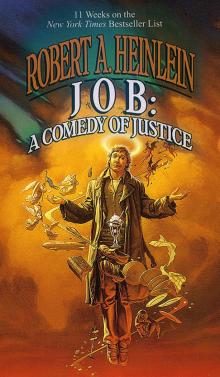 Job: A Comedy of Justice
Job: A Comedy of Justice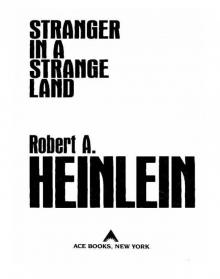 Stranger in a Strange Land
Stranger in a Strange Land The Worlds Of Robert A Heinlein
The Worlds Of Robert A Heinlein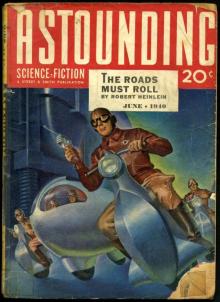 The Roads Must Roll
The Roads Must Roll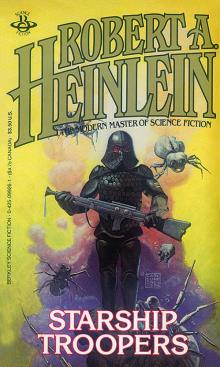 Starship Troopers
Starship Troopers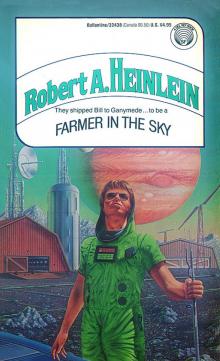 Farmer in the Sky
Farmer in the Sky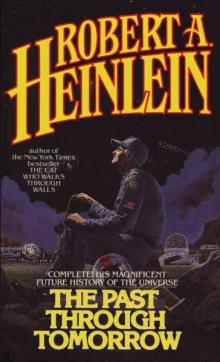 The Past Through Tomorrow
The Past Through Tomorrow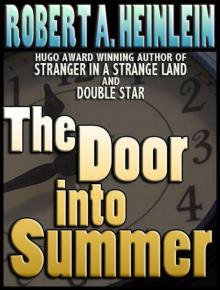 The Door Into Summer
The Door Into Summer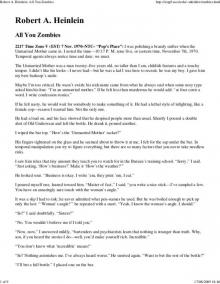 All You Zombies
All You Zombies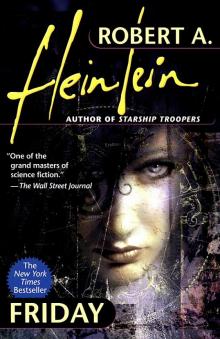 Friday
Friday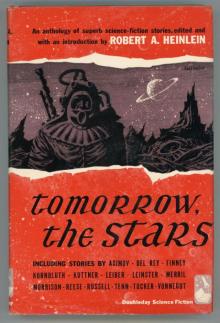 Tomorrow, the Stars
Tomorrow, the Stars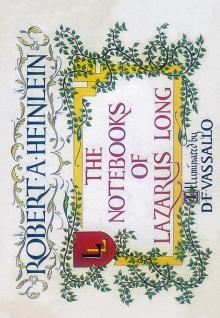 The Notebooks of Lazarus Long
The Notebooks of Lazarus Long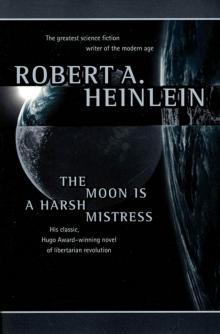 The Moon Is a Harsh Mistress
The Moon Is a Harsh Mistress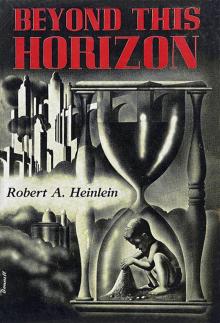 Beyond This Horizon
Beyond This Horizon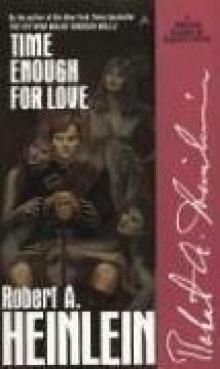 Time Enough for Love
Time Enough for Love Tunnel in the Sky
Tunnel in the Sky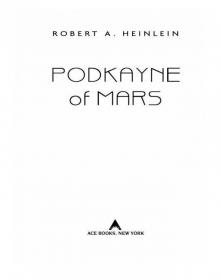 Podkayne of Mars
Podkayne of Mars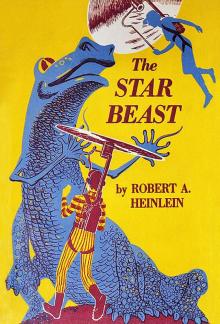 The Star Beast
The Star Beast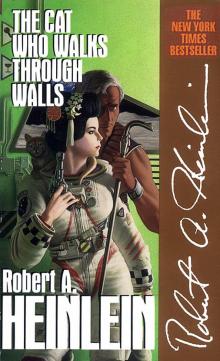 The Cat Who Walks Through Walls
The Cat Who Walks Through Walls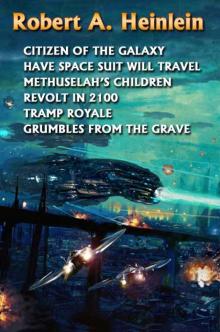 Grumbles From the Grave
Grumbles From the Grave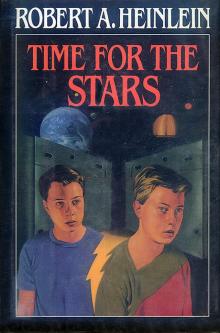 Time for the Stars
Time for the Stars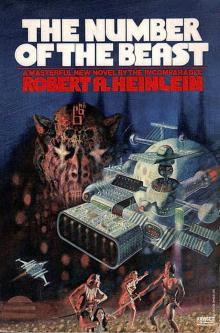 The Number of the Beast
The Number of the Beast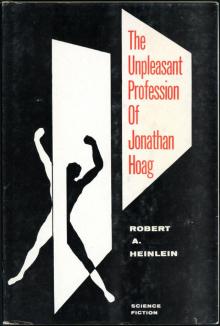 The Unpleasant Profession of Jonathan Hoag
The Unpleasant Profession of Jonathan Hoag Sixth Column
Sixth Column To Sail Beyond the Sunset
To Sail Beyond the Sunset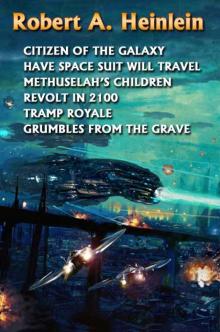 Revolt in 2100
Revolt in 2100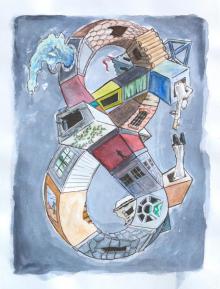 And He Built a Crooked House
And He Built a Crooked House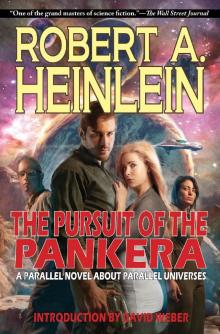 The Pursuit of the Pankera: A Parallel Novel About Parallel Universes
The Pursuit of the Pankera: A Parallel Novel About Parallel Universes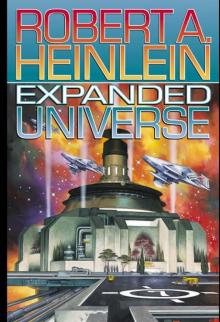 Expanded Universe
Expanded Universe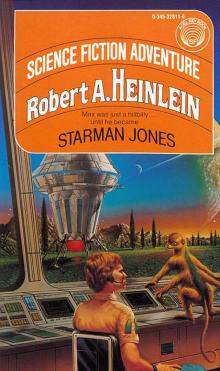 Starman Jones
Starman Jones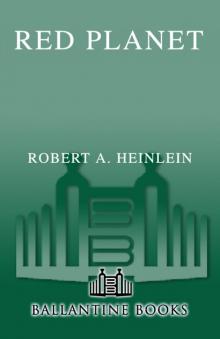 Red Planet
Red Planet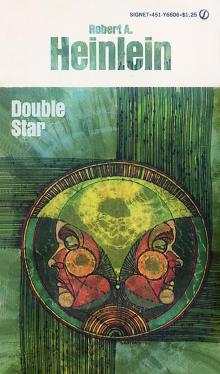 Double Star
Double Star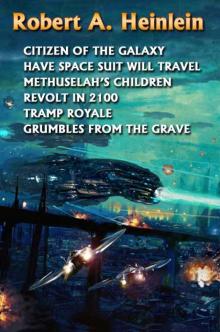 Citizen of the Galaxy
Citizen of the Galaxy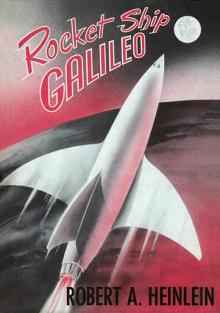 Rocket Ship Galileo
Rocket Ship Galileo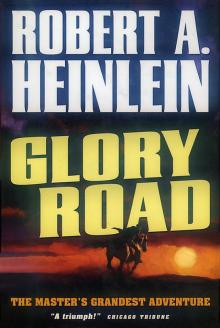 Glory Road
Glory Road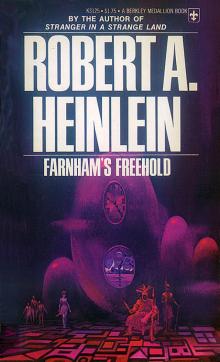 Farnham's Freehold
Farnham's Freehold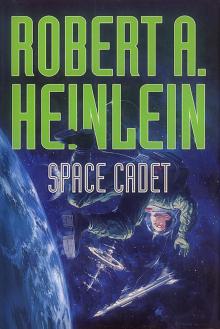 Space Cadet
Space Cadet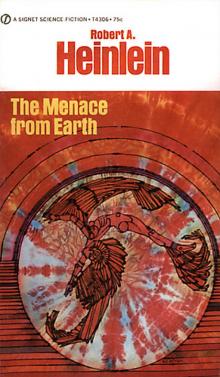 The Menace From Earth ssc
The Menace From Earth ssc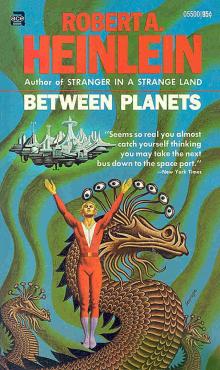 Between Planets
Between Planets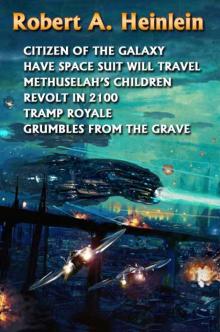 Methuselah's Children
Methuselah's Children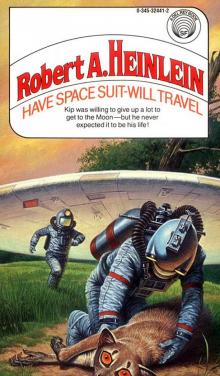 Have Space Suit—Will Travel
Have Space Suit—Will Travel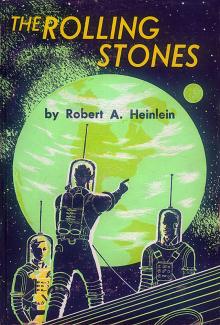 The Rolling Stones
The Rolling Stones Door Into Summer
Door Into Summer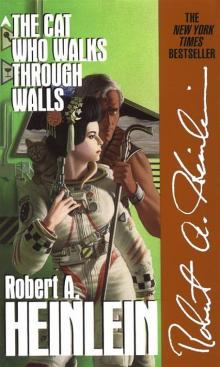 The Cat Who Walked Through Walls
The Cat Who Walked Through Walls Magic, Inc
Magic, Inc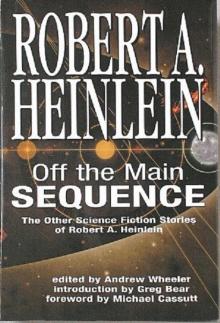 Off The Main Sequence
Off The Main Sequence Pied Piper
Pied Piper The Unpleasant Profession Of Jonathan Hoag And Other Stories
The Unpleasant Profession Of Jonathan Hoag And Other Stories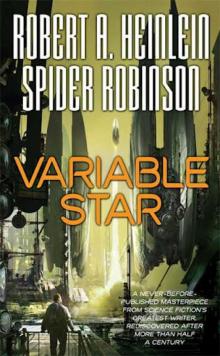 Variable Star
Variable Star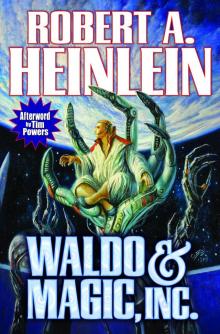 Waldo, and Magic, Inc
Waldo, and Magic, Inc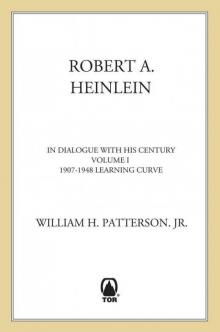 Robert A. Heinlein: In Dialogue With His Century
Robert A. Heinlein: In Dialogue With His Century Waldo
Waldo Bulletin Board
Bulletin Board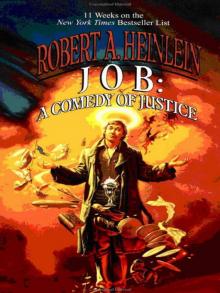 Job: A Comedy
Job: A Comedy Tramp Royale
Tramp Royale A Tenderfoot in Space
A Tenderfoot in Space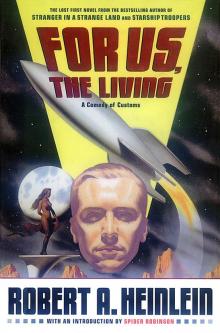 For Us, the Living
For Us, the Living Destination Moon
Destination Moon Logic of Empire
Logic of Empire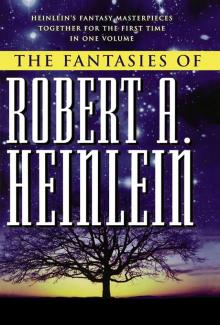 The Fantasies of Robert A. Heinlein
The Fantasies of Robert A. Heinlein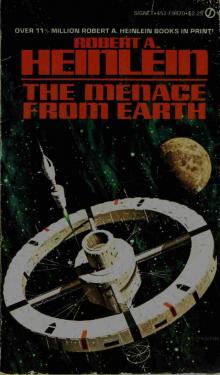 The Menace From Earth
The Menace From Earth From the Notebooks Of Lazarus Long
From the Notebooks Of Lazarus Long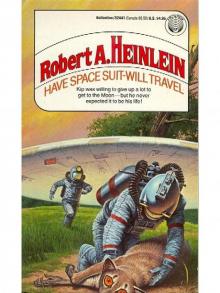 Have Space Suit - Will Travel
Have Space Suit - Will Travel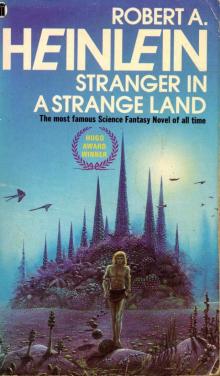 A Stranger in a Strange Land
A Stranger in a Strange Land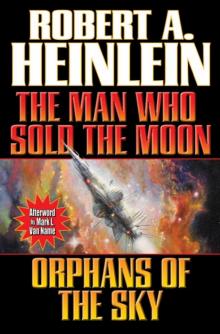 Man Who Sold the Moon / Orphans of the Sky
Man Who Sold the Moon / Orphans of the Sky